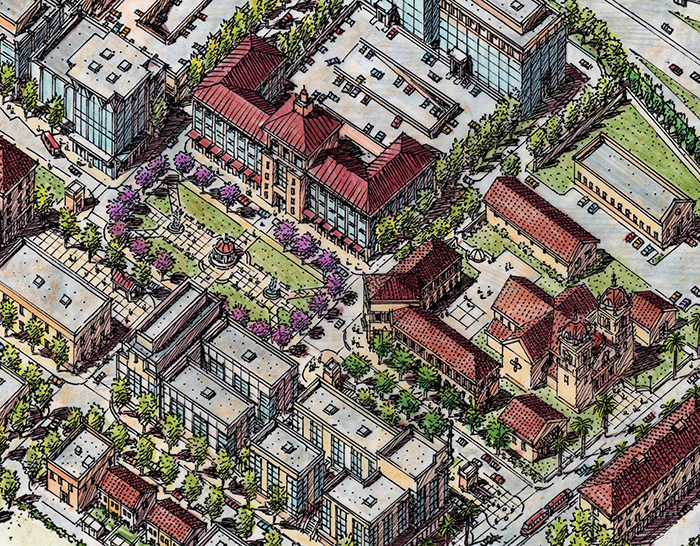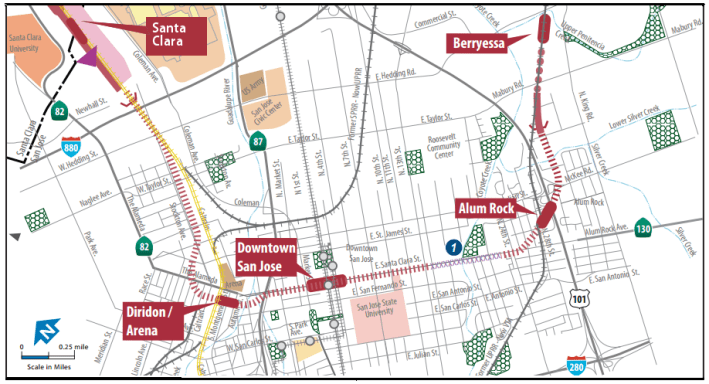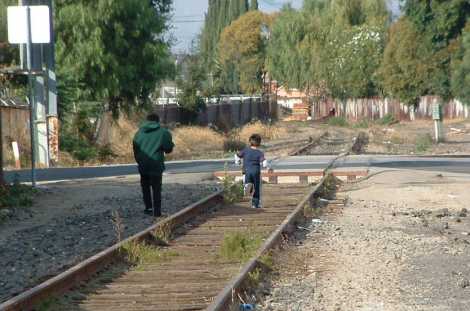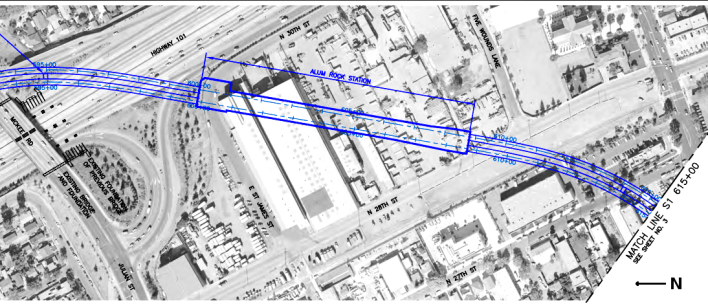VTA Cuts Alum Rock and Santa Clara BART Stations From Funding Plans
4:27 PM PST on November 18, 2014

Valley Transportation Authority (VTA) officials announced on October 6 that they would not seek federal funds in 2015 to construct Alum Rock and Santa Clara BART stations planned as part of the transit system's extension through downtown San Jose. The move sparked an outcry from neighborhood leaders and elected officials, who have worked in community planning efforts for over a decade to anchor new compact, walkable urban centers with the transit stations.
A $2.3 billion, 10-mile extension of BART to Berryessa in northeast San Jose, from its current terminus in Fremont, is currently under construction and scheduled to open in late 2017. Another $4.7 billion is needed for an extension from Berryessa to Santa Clara's Caltrain Station, through downtown San Jose, which had earlier been slated to have four stations. VTA planners say the extension would get a better chance of winning a $1.1 billion New Starts construction grant from the Federal Transit Administration (FTA) by cutting the $1.3 billion cost of the Alum Rock and Santa Clara stations from the grant application.
"This is a radical change from what we understood from VTA for the last nearly-15 years," said Terry Christensen, the Friends of Five Wounds Trail's executive director and long-time resident of the Five Wounds/Brookwood Terrace neighborhood. VTA first proposed the Alum Rock station for that neighborhood in 2001.

While FTA's policy guide for scoring New Starts transit projects requires that funded projects "be supported by an acceptable degree of local financial commitment, including evidence of stable and dependable financing sources," cutting the two stations still leaves the BART extension $1.7 billion short of its construction budget. Cutting the stations also hurts the project's ratings on other factors FTA scores on: mobility improvements, particularly for car-free households; economic development effects, or the likelihood of attracting transit-supportive development;, environmental benefits like reduced vehicle miles traveled; and congestion relief.
VTA is now pursuing a "phased station implementation", first constructing BART stations only at Diridon and Downtown by 2025, and later adding the Alum Rock and Santa Clara stations when an additional $1.3 billion for their construction somehow becomes available. VTA planners are also proposing to relocate the proposed Alum Rock Station, if and when it is ever built, to Santa Clara and 23rd streets to trim another $165 million in tunneling costs from the project.

The Alum Rock BART Station at 28th Street was to be the centerpiece of the planned Five Wounds Urban Village, a walkable, transit-oriented urban center with 875 housing units and up to 4,000 office and retail jobs built upon an existing industrial site located behind the Five Wounds Portuguese National Church on Santa Clara Street. An abandoned Union Pacific Railroad rail line that runs north-south through the site is planned to be rebuilt as the Five Wounds Trail connecting to the future Lower Sliver Creek and Coyote Creek trails elsewhere in San Jose. Unfortunately, VTA and San Jose allowed a section of the rail right-of-way to the south (along 22nd Street, from Williams Street to Highway 280) to be developed as new housing in 2007, sidelining the Five Wounds Trail as merely a wide sidewalk there.
The BART station would slash one-way travel times from San Jose to major job centers in Oakland and San Francisco by about 30 minutes compared to existing transit, and the resulting mixed-use development is expected to pay for street and sidewalk upgrades that would improve walking and bicycling safety in new downtown neighborhoods.
"This is a travesty, especially for anyone living downtown or in East San Jose," said Raul Peralez, who was elected on November 4 to represent District 3 on the San Jose City Council. "Constantly neglected and under-served, San Jose's east side and immigrant communities are once again first on the chopping block."

A community-based planning effort to create a new urban center around the Alum Rock BART Station began in 2002, and served as an inspiration for other "urban villages" where San Jose aims to concentrate future population and job growth. The city aims to develop a total of 70 urban villages, to "enable location of commercial and public services in close proximity to residential and employee populations, allowing people to walk to services while also providing greater mobility for the expanding senior and youth segments of the population," according to San Jose's Envision 2040 General Plan.
VTA staff will present the scaled-back, two-station "phased implementation" project to the public at a series of currently-unscheduled community meetings, and to the VTA Board of Directors for review and approval on December 11.
Stay in touch
Sign up for our free newsletter



